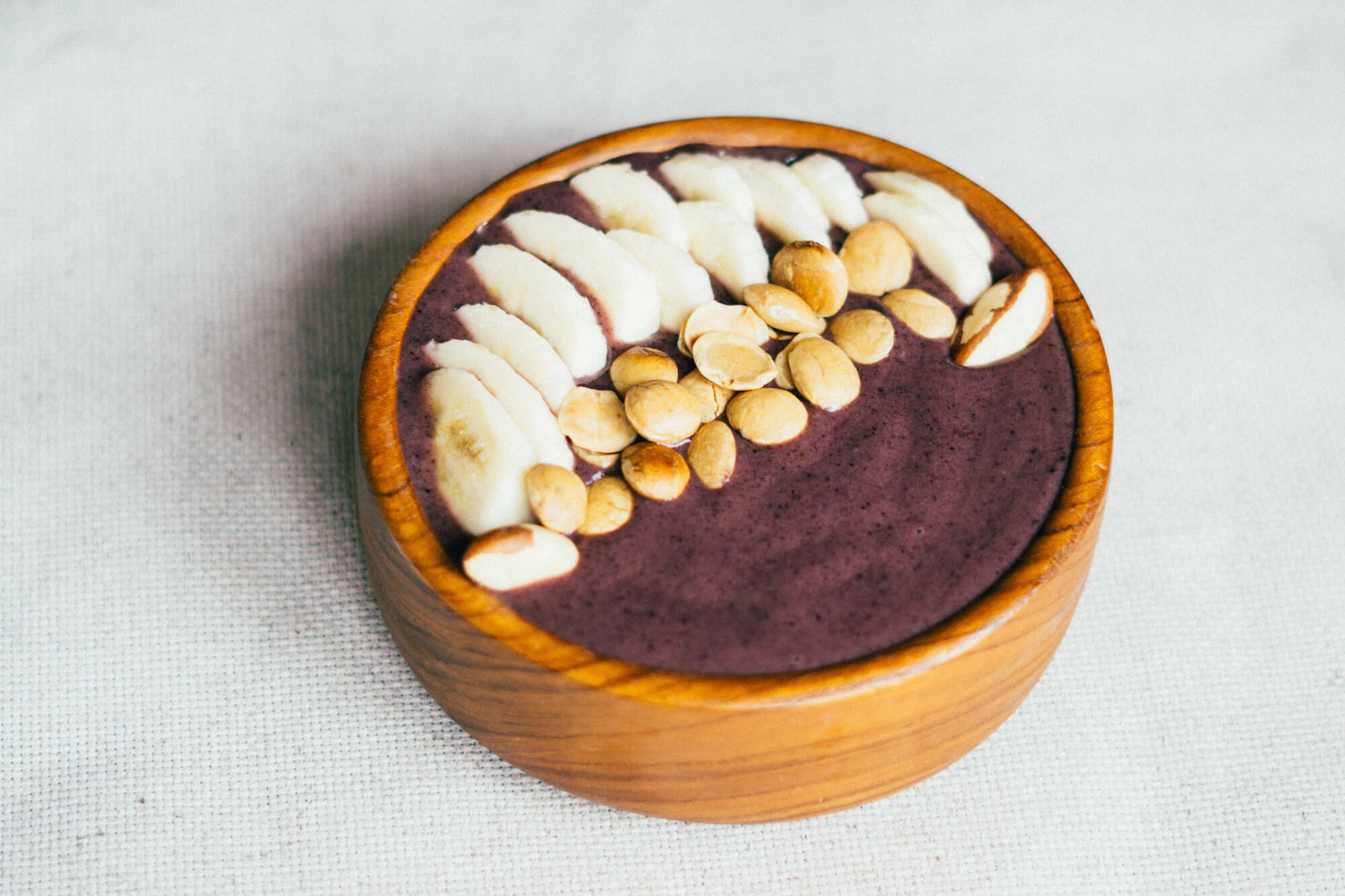Amazon Açaí Bowl
Açaí, practically unheard of outside of the Amazon just a few short years ago, is now easily one of the most indefinable Amazonian exports.
Served up in pretty much every organic and healthy smoothie shop from Hawaii to Berlin, açaí has become the hit new superfood. With a dark, rich purple color and a deep earthy flavor, this little miracle berry from the Amazon packs a powerful punch of nutrients.
Containing 10 times more antioxidants than red grapes, plenty of iron, calcium, and fiber, and being quite low in sugar, açaí truly qualifies as a superfood.
In the Amazon, native people have been enjoying açaí berries for generations and have perfected the art of harvesting the berries by hand from the high treetops of the Amazon’s floodplain forests.
Açaí is not a crop that can be easily managed and so far has not fit well into large scale industrialized farming methods. Instead, it is usually harvested from the wild or from minimally managed jungle plots.
It is a naturally organic crop and despite not being grow as much on traditional industrialized farms, it still provides a livelihood for thousands of native Amazonians who harvest and transport it to the production factories.
The only downside of açaí might be how quickly it spoils.
Berries harvested in the wild must quickly be transported to factories along the river where the berries can be frozen into a pulp or freeze-dried and turned into a powder.
In truth, this is a problem for the large companies exporting the açaí berries and probably more of an advantage to the local communities.
Native communities can profit from both the harvesting of the açaí as well as the quick and effective transportation of the berries to the production facilities. These facilities in turn hire local workers to process and package açaí for export creating a full network of jobs which is not as common with large, industrialized farms and exported products like bananas or soybeans.
What that means for most of the world is that seeing the actual açaí berry in person will probably require a trip to the Amazon.
Even in other regions of Brazil, the country where most açaí is harvested, the berry is almost always found in pulp form rather than the full berries.
Speaking of the rest of Brazil, the popular açaí bowl, topped with bananas and sometimes granola and honey, is the most common way you will find the berry served. This is also how you will find açaí served pretty much everywhere else in the world too.
In the Amazon though, were acai berries can be enjoyed fresh, the fruit is found in a number of other forms as well.
Rather than always being served sweet, acai berries can sometimes to found as a side dish to savory recipes like grilled fish, used in a similar way as beans might be in other cultures. It is also occasionally mixed with cassava flour and served as a healthy breakfast option.
While a sweet acai bowl might be the native recipe most loved by the outside world, this little superberry has a lot more to offer than that.
Try adding it to your morning oatmeal or even using it to add a new element to a mole-type sauce.
Sometimes going back to the traditional native recipes can give us new ways to use products we think we have figured out.
If you are a little nervous though or haven’t enjoyed acai before, you really can’t go wrong with the worldwide favorite - an Açaí na Tigela (aka an açaí bowl).

Amazon Açaí Bowl
Sweet and full of antioxidants, an açaí bowl is great for breakfast or dessert
1 cup (200g) frozen açaí pulp
1 large banana
Your choice of toppings (honey, granola, fruit. etc.)
Blend the frozen açaí pulp with half a banana. If using açaí powder, blend 1 tablespoon with a full banana (frozen) to achieve a similar texture.
Do not overblend as the açaí will begin to melt. If the mixture becomes to thin, freeze after blending for 10-20 minutes.
Serve açaí in a bowl and top with granola, Amazonian nuts, honey, sliced banana, or other fruit toppings.
-
Amazonian
|
Vegetarian
|
Vegan
|
Dairy Free
|
Gluten Free